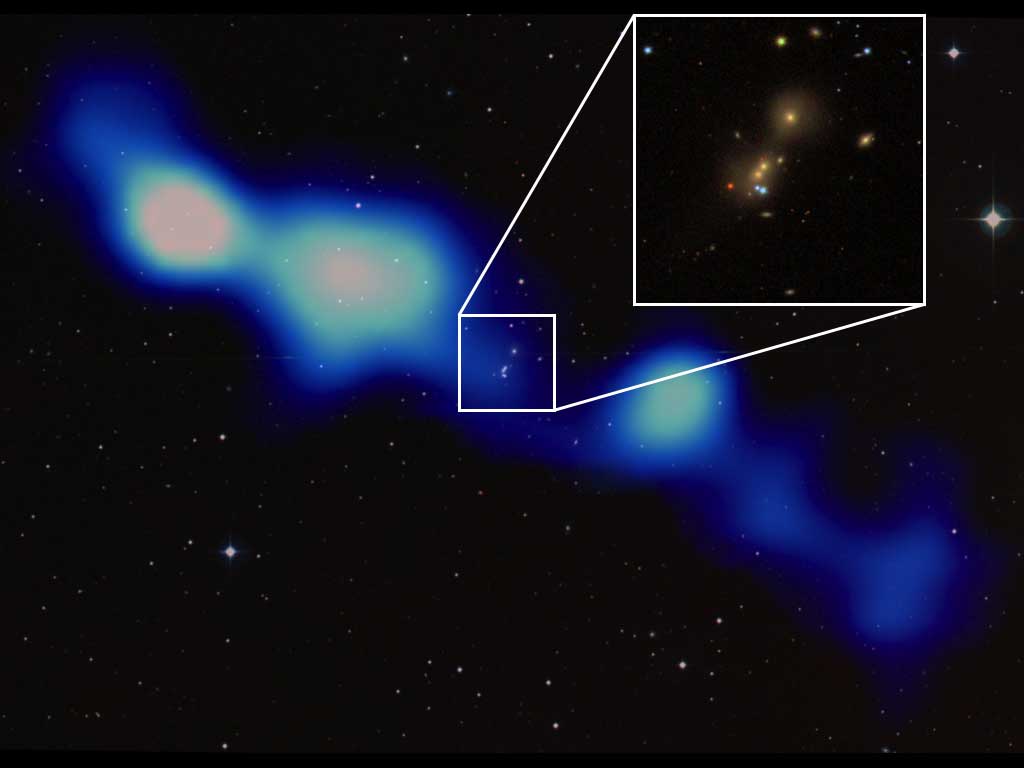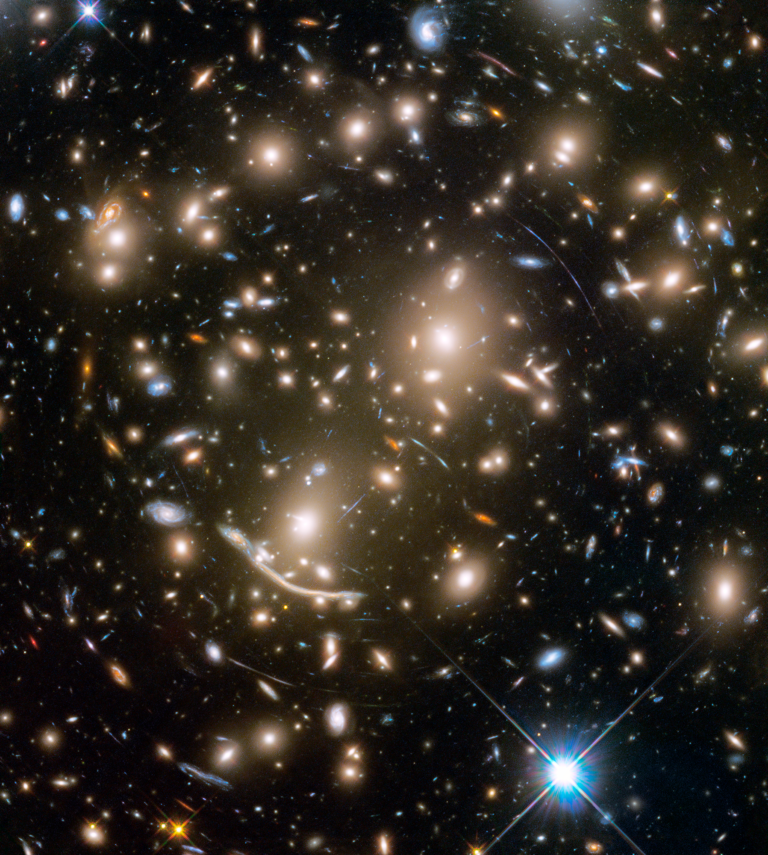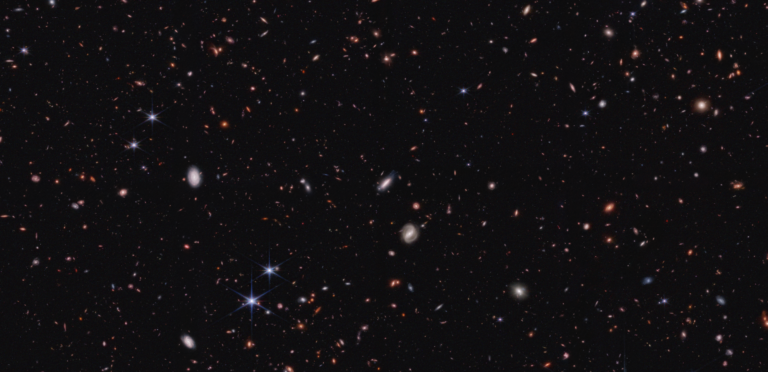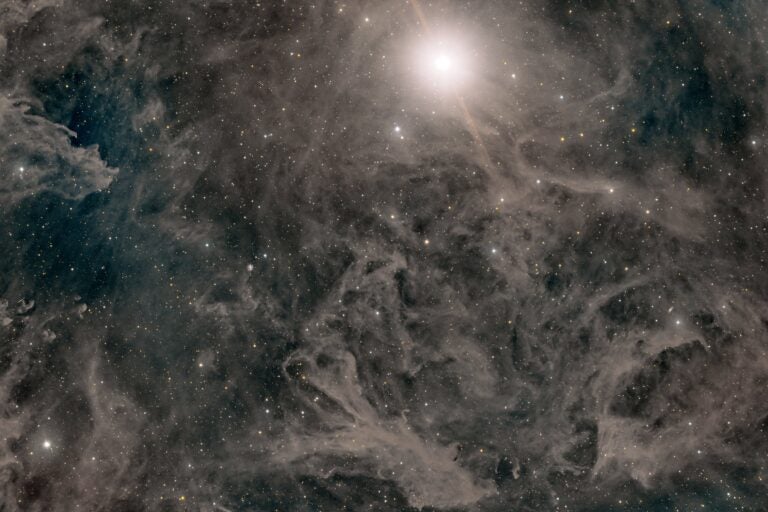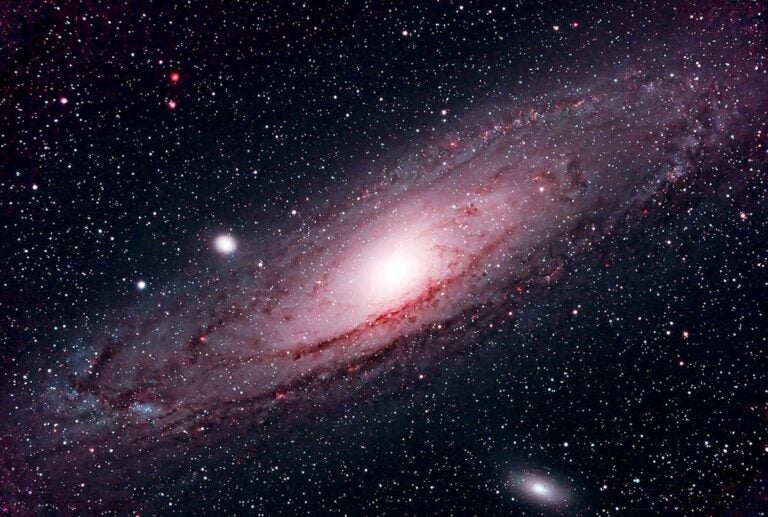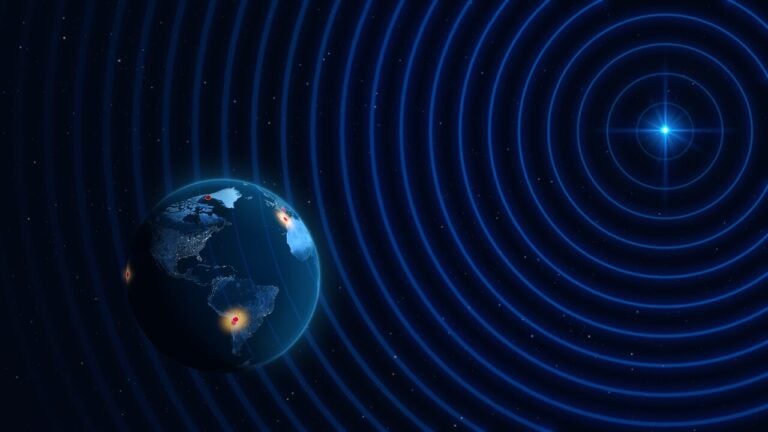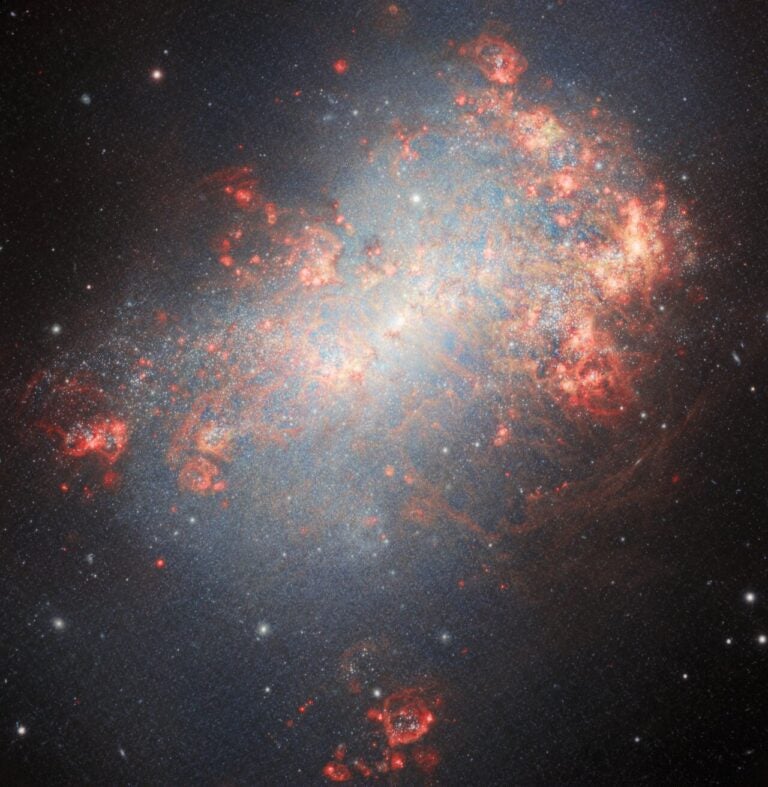The new galaxy is a member of a class of objects called Giant Radio Galaxies (GRGs). GRGs are a type of radio galaxy with extremely large physical sizes, suggesting that they are either very powerful or very old. LOFAR is an effective tool to find new GRGs like this one because of its extreme sensitivity to such large objects, combined with its operation at low frequencies that are well-suited to observing old sources.
The center of the new GRG is associated with one member of a galaxy triplet known as UGC 09555. The central galaxy is located at a redshift of z = 0.054536, or 750 million light-years from Earth. The central radio source was previously known and has a flat radio spectrum, typical of giant radio galaxies.
LOFAR’s MSSS survey is a concerted effort to image the entire northern sky at very low radio frequencies, between 30–160 MHz (wavelengths from 2–10m). The primary aim of the survey is to perform an initial shallow scan of the sky in order to create an all-sky model that will support the calibration of much deeper observations. It is comparable in sensitivity and angular resolution to previous surveys with “classical” radio telescopes like the Very Large Array (VLA) in the United States, ASTRON’s Westerbork Synthesis Radio Telescope (WSRT), and the Giant Metrewave Radio Telescope (GMRT) in India. MSSS is unique in that it operates at substantially lower frequencies and is, therefore, poised to uncover new sources that were missed by previous surveys. Its broad bandwidth coverage is also novel in all-sky radio surveys and will be used to provide additional information about the detected objects.

